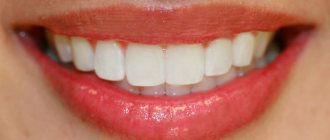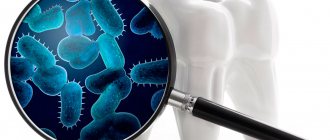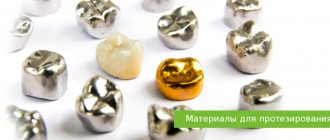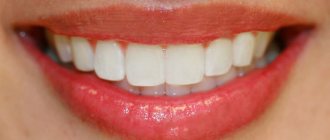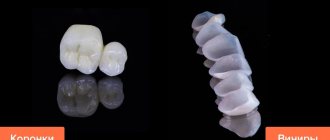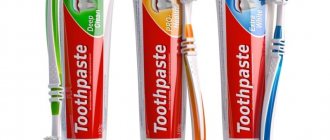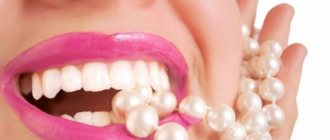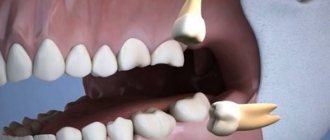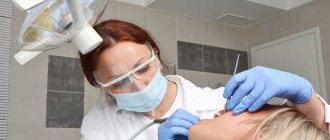Author: Brodsky Sergey Evgenievich Deputy Chief Physician, Candidate of Medical Sciences in the specialties: dentistry and medical microbiology Techniques for tooth extraction depend on the number of its roots, the clinical situation and surgical instruments. You can learn about how the process of tooth extraction occurs in this article.
- What instruments are used to remove teeth?
- How does the tooth extraction process work?
- How is a complex tooth extraction performed?
- When is complex tooth extraction required?
Forceps
When removing teeth with forceps, the lever method is used. Such instruments consist of cheeks, a lock and handles:
- The cheeks are the part that secures the crown of the tooth being removed.
- Handles (handles) are the part by which the doctor holds the forceps in his hand.
- The lock is the junction of the handles and cheeks.
All forceps differ in their design - it depends on the anatomy and location of the tooth being removed in the oral cavity.
To remove lower teeth
- Beak forceps - used to remove teeth with a retained crown and, in some cases, roots in the lower jaw. Their feature is the perpendicular arrangement of the cheeks in relation to the handle. Beak-shaped forceps can have non-converging or converging cheeks.
- For the lower eighth teeth – used when the patient’s mouth opening is limited or to remove lower wisdom teeth. They have cheeks curved in a horizontal plane.
To remove upper teeth
- Bayonet-shaped (bayonet) - also called universal, since they can remove almost any tooth or root of the upper jaw. Depending on the width of the cheeks, they can be narrow, medium or wide. By design, bayonet-shaped pliers have handles and cheeks parallel to the axis.
- Direct – used to remove permanent and primary teeth of the anterior group. The handles and the working part are located on the same line.
- S-shaped forceps - for removing chewing teeth of the upper jaw. They have an S-shaped bend and their cheeks do not close together. There are S-shaped forceps for molars and for premolars. For molars, in turn, there are right or left (designed to remove the right or left upper molar, respectively). One cheek of such forceps is rounded at the end, the other ends with a spike, which during removal must be placed between the buccal roots of the sixth and seventh teeth.
- For the upper eighth teeth - special forceps designed to remove the upper wisdom teeth. The longitudinal axis of the handles and the axis of the cheeks are parallel, there is a transition part. Both cheeks are wide, rounded at the end, the inner surface has indentations. When closed, such forceps do not converge; they are conveniently inserted deep into the oral cavity, while the lower teeth do not interfere with the extraction procedure.
S-shaped forceps with non-converging cheeks without spines
Premolars of the upper jaw with a preserved crown
Beak-shaped forceps, curved along a plane, with non-converging cheeks, with spines
Lower first and second molars with retained crown, with limited mouth opening
Beak-shaped forceps, curved along a plane, with non-converging cheeks, without spines
Lower third molars with a preserved crown
Complex thread type Polyfilament twisted
Monofilament yarns Polyfilament braided yarns
1. TO REMOVAL THE UPPER INCISERS AND FANGS, THE FORCEPS ARE USED: Straight
2. Conditionally absorbable is a material that: Absorbs over a longer period of time
3. TOOLS USED TO EXTRACT TEETH: Elevator, forceps
4. FRACTURE OF THE LOWER JAW IS MORE LIKELY WHEN WORKING WITH TOOLS: Lecluse elevator
5. WHEN THE ROOT OF A TOOTH IS PUSHED INTO THE POSTERIOR DEPARTMENTS OF THE HYPOGLOUS AREA DURING THE EXTRACTION OF TEETH 3.8 and 4.8, THERE ARE PERFORMED: Hospitalization of the patient
6. TO REMOVAL THE LOWER THIRD MOLAR INSTRUMENTS ARE USED: Forceps curved along a plane
7. TO REMOVAL THE FRONTAL GROUP OF TEETH OF THE UPPER JAW, THE TONGS ARE USED: Straight with non-converging cheeks
8. IN THE EVENT OF GUM RUPTURE DURING A TOOTH EXTRACTION OPERATION, IT IS SHOWN: Applying sutures to the gum
9. TO REMOVAL TEETH AND ROOTS ELEVATORS DESIGN ARE USED: Straight, Angled
10. WHEN REMOVING RIGHT PREMOLARS AND MOLARS OF THE LOWER JAW, THE DOCTOR IS FROM THE PATIENT: To the right and back
11. THE FINAL STAGE IN TOOTH ROOTS REMOVAL IS CURETAGE
12. WHEN PUSHING A ROOT INTO THE MAXILLARY SINUS, THE DOCTOR’S MISTAKEN ACTION IS: Removing the root through the hole
13. WHEN PAMPING THE socket, the iodoform turunda is removed: On days 5-7
14. IN THE AREA OF THE BOTTOM OF THE MAXILLARY SINUS THE ROOTS OF THE TEETH ARE CLOSE: Premolars and Molars
15. POSSIBLE LOCAL COMPLICATION WHEN EXTRACTING MAXILLARY TEETH: Perforation of the maxillary sinus
16. TO REMOVAL THE LOWER PREMOLARS, THE FORCEPS ARE USED: Beak-shaped without spines
17. LOCAL CAUSE OF BLEEDING FROM THE socket IS: Fracture of the intercoronal septum
18. INDICATION FOR URGENT TOOTH EXTRACTION IS: intractable purulent inflammation in the periodontium
19. WHEN EXTRACTING TEETH WITH THE CROWN PRESERVED, THE following are USED : forceps with non-converging cheeks
20. TO STOP BLEEDING WHEN SOFT TISSUE DAMAGE IS USED: Applying sutures to the wound
21. Which of the following suture materials are conditionally absorbable? Silk, polyamide
22. COMPLICATIONS ARISING DURING REMOVAL OF THE EIGHTH TOOTH OF THE UPPER JAW INCLUDE: Fracture of the tubercle of the upper jaw
23. DISLOCATION OF THE LOWER JAW IS POSSIBLE DURING TEETH EXTRACTION: 4.7, 3.7
24. MOST OFTEN, A FRACTURE OF THE LOWER JAW OCCURS DURING TEETH EXTRACTION: 3.8 4.8
25. INSTRUMENTS USED TO REMOVAL UPPER MOLARS: S-shaped forceps with a spike
26. A LOCAL COMPLICATION DURING A TOOTH EXTRACTION OPERATION IS: fracture of the crown or root of the tooth
27. A LOCAL COMPLICATION AFTER TOOTH EXTRACTION IS: Alveolitis of the socket
28. Which of the following suture materials are non-absorbable? Polyolefins, Horsehair, Metal wire
29. TO REMOVE THE ROOTS OF THE LOWER TEETH, THE FORCEPS ARE INTENDED: beak-shaped with converging cheeks
30. LOCAL LONG-TERM COMPLICATIONS AFTER TOOTH EXTRACTION INCLUDE: osteomyelitis of the socket
31. TO REMOVAL MOLARS ON THE MANDIBLE IN DIFFICULT OPENING OF THE ORAL CAVITY, THE following are used: forceps curved along a plane
32. INSTRUMENTS USED TO REMOVAL UPPER THIRD MOLARS: Special forceps
33. TO REMOVE THE ROOTS OF UPPER MOLARS THE FORCEPS ARE DESIGNED: Bayonet-shaped
34. WHEN REMOVING THE LEFT PREMOLARS AND MOLARS OF THE MANDIBLE, THE DOCTOR IS POSITIONED FROM THE PATIENT: In front and to the right
35. A COMMON CAUSE OF PROLONGED BLEEDING FROM THE socket IS: Acute leukemia
36. Synthetic suture materials include : Polyglycolic acid derivatives, polyesters
37. IF A TOOTH ROOT IS PUSHED INTO THE MAXILLIAR SINUS, YOU SHOULD: Refer the patient to the hospital
38. THE LOCAL CAUSE OF BLEEDING FROM THE DEPTH OF THE socket IS: injury to the inferior alveolar artery
39. ROTATION IS PERFORMED WHEN REMOVAL: Maxillary incisors
40. WHEN REMOVING THE SIXTH TOOTH OF THE LOWER JAW, THE FIRST MOVEMENT IS PERFORMED: Luxation to the buccal side
41. TO REMOVAL THE ROOTS OF UPPER PREMOLARS, CHEEK TONGS ARE DESIGNED: S-shaped with converging
42. TO REMOVAL THE LOWER INCISERS AND FANGS, THE INSTRUMENTS ARE USED: Beak-shaped forceps
43. IN THE FIRST VISIT FOR ALVEOLITIS, YOU SHOULD CARRY OUT: Removal of the disintegrated clot and loose introduction of iodoform turunda into the socket
44. Natural organic suture materials include: Catgut, Silk, Cellulose derivatives
45. A SIGN OF OPENING OF THE BOTTOM OF THE MAXILLARY SINUS IS: Positive oronasal test
46. TO REMOVAL DISCONNECTED TOOTH ROOTS 3.7 USED: Angle elevator
47. WHEN OPENING THE BOTTOM OF THE MAXILLARY SINUS THEY PERFORM: Suturing with a flap
48. TO REMOVAL THE LOWER THIRD MOLAR INSTRUMENTS ARE USED: Forceps curved along a plane
49. MOST OFTEN, TEETH DISPLACEMENT INTO THE THICKNESS OF SOFT TISSUE OCCURS WHEN TEETH EXTRACTION: 3.8, 4.8
50. COMPLICATIONS ARISING DURING TOOTH EXTRACTION OPERATION INCLUDE: Luxation of an adjacent tooth, Socket Bleeding
51. THE FIRST MOVEMENT WHEN REMOVAL OF THE SIXTH TOOTH OF THE UPPER JAW IS: Luxation to the palatal side
52. A COMMON CAUSE OF BLEEDING AFTER TOOTH EXTRACTION IS: Hemophilia
53. Which of the following suture materials are absorbable? Catgut, Polyurethane
54. TO STOP BLEEDING FROM THE WALLS OF THE socket, the following is done: compression of the bleeding area of the bone
55. TO REMOVAL THE LOWER MOLARS, THE FORCEPS ARE USED: Beak-shaped with spikes
56. TO TREAT THE HOLE AFTER TOOTH EXTRACTION, USE: A curettage spoon
57. DURING THE OPERATION OF ROOTS REMOVAL OF THE CENTRAL INCISORS OF THE UPPER JAW, THE following are USED: straight forceps with converging cheeks
58. TO REMOVAL THE RIGHT UPPER MOLAR WITH THE CROWN PRESERVED, THE FORCEPS ARE INTENDED: S-shaped with a spike on the left
59. BREAKING OF THE TUBE OF THE UPPER JAW CAN OCCUR WHEN TEETH EXTRACTION: 1.8, 2.8
60. IN THE EVENT OF BLEEDING FROM THE BOTTOM OF THE socket, the following should be carried out: tight tamponade of the socket with iodoform turunda
61. IN THE EVENT OF A ROOT FRACTURE, THE DOCTOR’S INCORRECT ACTION IS: leaving the root fragment in the socket
62. WHEN REMOVING THE EIGHTH TOOTH ON THE LOWER JAW, IT IS RECOMMENDED TO USE A BAYONET ELEVATOR IN THE FOLLOWING CONDITION OF THE DENTH ARCH: presence of stable 6th and 7th teeth
63. AFTER COMPLEX TOOTH EXTRACTION 4.8 SHOULD BE PRESCRIBED TO THE PATIENT: cold on the area of the angle of the lower jaw
64. THE WAY TO STOP BLEEDING FROM THE DEPTH OF THE socket IS: tight tamponade of the socket
65. MOST OFTEN A FRACTURE OF THE LOWER JAW OCCURS DURING TEETH EXTRACTION: 3.8 or 4.8
66. Natural inorganic suture materials include: Metal wire
67. BEFORE THE OPERATION OF TOOTH REMOVAL WITH FORCES, THE SURGEON PERFORMS: separation
68. MOST OFTEN, A FRACTURE OF THE LOWER JAW OCCURS DURING TEETH EXTRACTION: 3.8 4.8
69. WHEN OPENING THE BOTTOM OF THE MAXILLARY SINUS, YOU SHOULD CARRY OUT: Covering the mouth of the socket with iodoform turunda for a period of 5-7 days
70. INDICATIONS FOR ROUTINE TOOTH EXTRACTION IS: Tooth mobility of the 3rd degree
71. PERFORATION OF THE BOTTOM OF THE MAXILLARY SINUS IS MOST LIKELY WHEN TEETH EXTRACTION: 1.6, 2.6, 1.7, 2.7
72. TO REMOVAL THE UPPER PREMOLARS, THE FORCEPS ARE USED: S-shaped without a spike
73. WHEN REMOVAL OF THE SECOND MOLAR OF THE MANDIBLE, THE FIRST MOVEMENT IS PERFORMED: Luxation and rotation
74. LOCAL CAUSE OF BLEEDING AFTER TOOTH EXTRACTION IS: Soft tissue injury
SECTION: PERIODONTOLOGY
Name the instrument – Periodontal probe
Name the tool - Hoe
Name the instrument – Curette (Universal)
Name the tool - Scaler
Name the instrument – Curette (Zone-specific)
Elevators
When removing a tooth using an elevator, the principle of leverage is also used. The elevator consists of:
- Working part
- Handles
- Connecting rod
All elevators are divided into straight (wide, medium, narrow - depending on the width of the working part) and angular (toward, away from you). On one side the working part is convex, on the other side there is a “groove”. During removal, the concave part (“groove”) is directed towards the root, and the convex side is directed towards the wall of the hole.
The straight elevator is used to remove the roots of single-rooted teeth or severed roots of multi-rooted teeth in both the upper and lower jaws. Angle elevators are used when removing the roots of the lower chewing teeth.
How does the tooth extraction process work?
The process of tooth extraction proceeds according to the following scheme:
- Pain relief with local anesthesia;
- Selection of tools for dental extraction (elevator and/or forceps);
- Applying forceps or an elevator to the tooth being removed;
- Rocking or dislocation of the “sentenced to be removed”;
- Extracting a tooth from the jaw socket;
- Toilet (care and protection) of the surgical wound left after tooth extraction.
In this scheme, there may be additional stages when, before tooth extraction, a lot of the root tooth is first sawed and pulled out of the bone socket in parts. This option is required for crooked and twisted roots.
Drill
Sawing teeth using a drill is an alternative to chiseling and hammering out teeth. Both straight and turbine handpieces are used.
A straight tip (ball-shaped bur) is used to remove bone tissue that is overhanging or interfering with tooth extraction. A turbine tip (fissure burs) is most often used for sawing a tooth into several parts: separating the crown from the roots, separating the roots in order to remove them later separately.
It is necessary to remind you that when operating the drill, you must use water cooling.
We advise you to read: Tactics regarding primary teeth in adult patients
How is a complex tooth extraction performed?
Options for non-standard tooth extraction are required in different clinical situations. The most common option is the difficult removal of the eighth tooth, especially when it has not fully erupted or is generally lying and completely immured in the jaw.
The most commonly used method for complex tooth extraction is:
- Conducting anesthesia;
- Creating access to the tooth to be removed, dissecting the mucous membrane and periosteum, forming an evacuation window in the bone tissue of the jaw, in which the unerupted (impacted) tooth is hidden;
- Extracting a tooth from the jaw using an elevator;
- Toilet of the surgical wound, including treatment with furatsilin and rinsing with hydrogen peroxide, filling the voids from under the extracted complex tooth with bone powder, applying a membrane and suturing the gums;
- Prescription of anti-inflammatory therapy.
